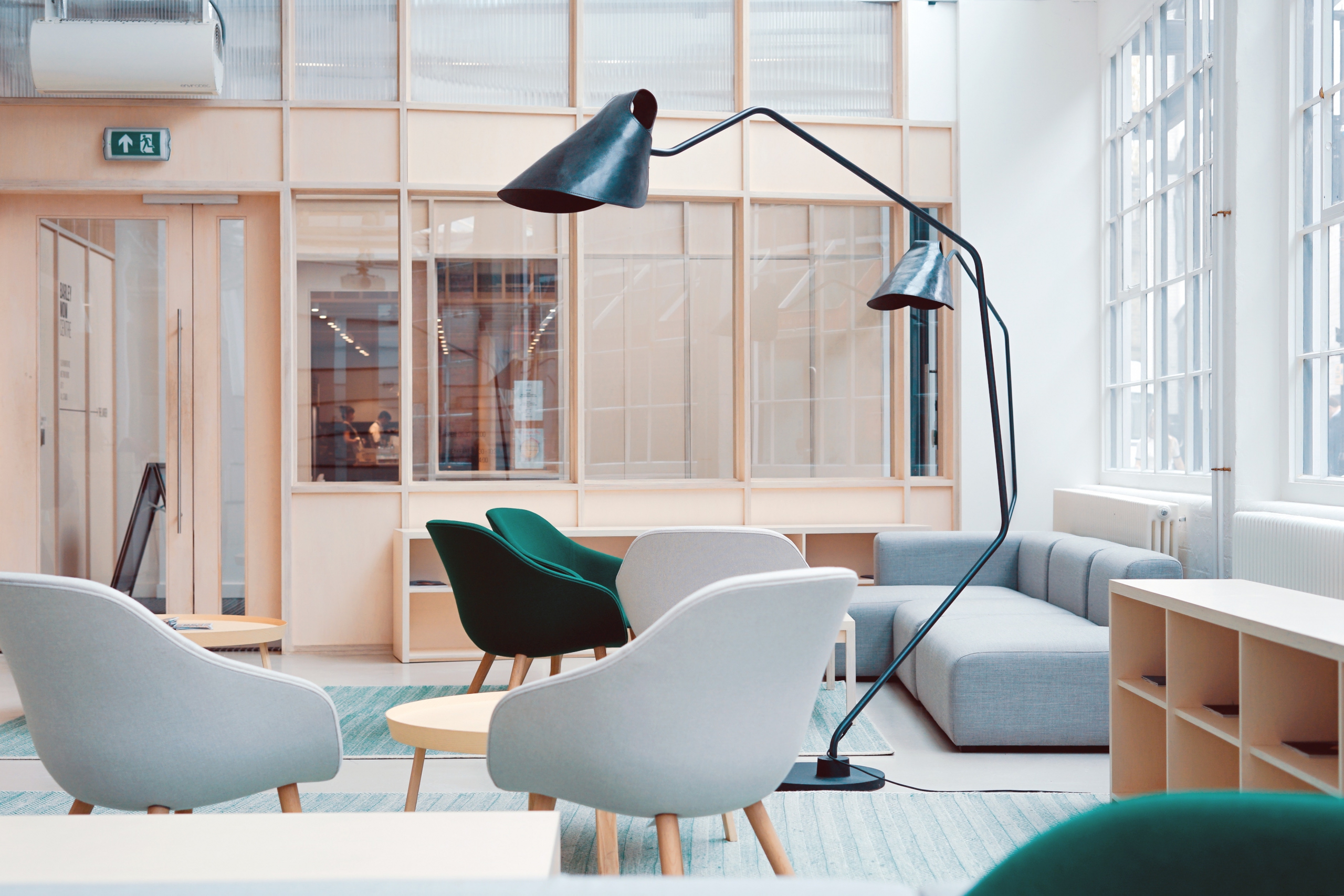One of the long-required components of any residential / mixed-use development has been the “business center”. Seen in multiple typologies, from hotels to residential buildings, the business center often finds itself in a sub-prime location with little design attention paid to it.
Let us paint an all-too-familiar scenario: A couple of dated and malware-ridden desktops, unreliable Wi-Fi with a browser that loads at a glacial pace, uncomfortable (and somehow always stained!) chairs, and an incessantly-inkless printer are usually placed in what could easily be repurposed as a windowless custodial closet.
Even when prioritized at a higher level, these spaces do not encourage clamor among residents for a seat on a regular basis, which is a surprising dynamic given the rising popularity of working remotely. Laptops and powerful wireless connectivity have given workers the tools to work anywhere. Strong demand for employees to work outside the office, but not always in their homes, has lead to the rapid growth of the coworking space industry, featuring companies like the ubiquitous WeWork brand, among a slew of others.
Although developers have tried to raise finishes and aesthetic design in their business centers, the models have generally remained unchanged. At tvsdesign, we study these spaces at an experiential level, along with deep experience and understanding of office design. We have brought our diverse expertise and diligent research to the residential business center, creating functional spaces residents will use regularly.
 The first step is creating a space that a resident would want to spend 6+ hours in, possibly daily. Natural light, comfort, and a diversity of seating and desk types are critical components to giving residents an option that supersedes the convenience of a nearby coworking space, by providing it within their living quarters. Creating a distinction from the ambiance of residential living quarters enhances the perceived separation between working and living spaces that people crave, which coworking spaces. Beyond this foundation of good spatial design is the required functionality of those spaces. Our office analyzes what people bring to, and need in, these spaces on a regular basis. Laptops, notebooks, writing instruments and materials, chargers, headphones, etc. are items that residents would pack up every day to bring to a coworking space. To make the “business center” as convenient as possible, providing lockable storage for these items within the business center draws constant use of the space, making it easy for residents to come and go, from the space back to their units, encouraging them to use the space regularly. These design moves are just the tip of the iceberg regarding rethinking business center design.
The first step is creating a space that a resident would want to spend 6+ hours in, possibly daily. Natural light, comfort, and a diversity of seating and desk types are critical components to giving residents an option that supersedes the convenience of a nearby coworking space, by providing it within their living quarters. Creating a distinction from the ambiance of residential living quarters enhances the perceived separation between working and living spaces that people crave, which coworking spaces. Beyond this foundation of good spatial design is the required functionality of those spaces. Our office analyzes what people bring to, and need in, these spaces on a regular basis. Laptops, notebooks, writing instruments and materials, chargers, headphones, etc. are items that residents would pack up every day to bring to a coworking space. To make the “business center” as convenient as possible, providing lockable storage for these items within the business center draws constant use of the space, making it easy for residents to come and go, from the space back to their units, encouraging them to use the space regularly. These design moves are just the tip of the iceberg regarding rethinking business center design.
From a dollars perspective, residents will pay more per square foot for an apartment if they can truly see themselves using the business center, since they can save money they would have otherwise spent on a coworking space membership or coffees from a nearby Starbucks. High quality design, coupled with a smart approach to user needs and desires, pushes the traditional business center into an amenity that improves upon even the best coworking space models. The key is never underestimating the power of convenience. The world of residential and mixed-use development can capitalize on the power of locality to provide quality spaces for people to lead collaborative and effective work-life balances, improving resident lifestyles with competitive development strategies.




